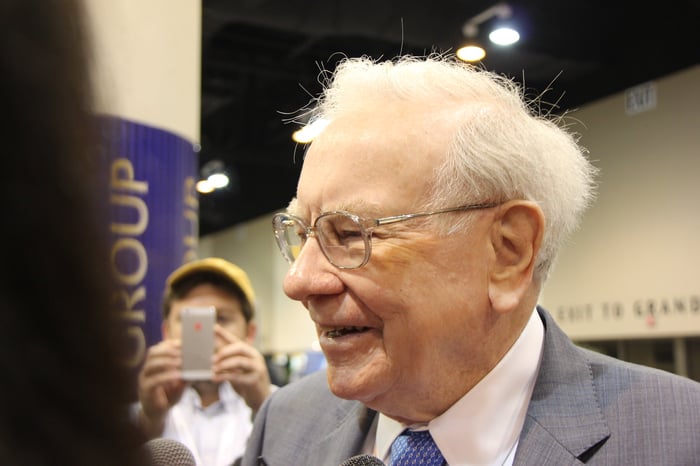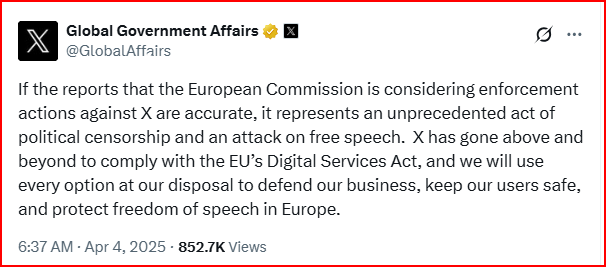Berkshire Hathaway’s Resilience: A Strategic Investment in Uncertain Times
Investing all your money in a single stock carries significant risk, as it ties your entire portfolio to one company’s performance. To mitigate potential volatility, a diversified portfolio is recommended. The Motley Fool suggests holding at least 25 different stocks.
However, Berkshire Hathaway (NYSE: BRK.A)(NYSE: BRK.B), a $1.1 trillion holding company, stands out as an exception. Its diverse mix of wholly owned businesses, stock investments, and a substantial $334 billion cash reserve sets it apart. Let’s analyze Berkshire’s success and future outlook.
Proven Track Record of Success
Since Warren Buffett took charge of Berkshire Hathaway in 1965, he has achieved a compound annual growth rate of 19.9%. This nearly doubles the S&P 500’s total return of 10.4% through 2024. Additionally, in years marked by instability like 2025, Berkshire’s stock surged nearly 17%, while the S&P 500 declined by 8%.
Buffett’s journey began with a majority stake acquisition in a struggling textile company, where he pursued what he called “cigar butt investing.” This approach focused on acquiring undervalued companies with minimal remaining profits. Over the years, however, Buffett transitioned to his partner Charlie Munger’s strategy of investing in “wonderful businesses at fair prices.”
Now, Berkshire operates 189 businesses, including notable names like BNSF Railway and Dairy Queen. Its stake in insurance conglomerate GEICO has been crucial to its success. Since acquiring GEICO in 1996, Berkshire benefits from insurance premiums received upfront, referred to as “float.” This float provides significant capital for investments, increasing from $46 billion two decades ago to $171 billion today.
In 2024, Berkshire reported operating earnings exceeding $47.4 billion. Combined with its float, the company boasts a stock portfolio valued around $270 billion, in addition to its $334 billion cash pile.
Capitalizing on Economic Downturns
The substantial cash reserve is a pivotal reason Berkshire could thrive during a recession. Buffett has allocated much of this cash to Treasury bills, a secure form of U.S. government debt producing yields between 4% and 4.3% for maturities of one year or less.
Due to the liquid nature of Treasury bills, Buffett can quickly deploy significant amounts of the $334 billion into the stock market. The S&P 500’s current decline of 8% and potential tariff-related clearance sales could present investment opportunities.

Image source: The Motley Fool.
Buffett’s past experiences, particularly during the financial crisis, demonstrate his acumen. In 2011, he invested $5 billion in preferred stock from Bank of America, later converting it into a $15 billion profit in 2017.
Buffett intends to maintain a minimum float of $30 billion. Despite this threshold, he still has ample liquidity to act. Regarding potential investments, Buffett’s 2018 letter to investors noted, “In the years ahead, we hope to move much of our excess liquidity into businesses that Berkshire will permanently own.” However, he cautioned that the market for such investments is currently inflated. While some key holdings like Apple, Bank of America, and Coca-Cola seem out of reach, companies like DaVita, Kraft-Heinz, and Sirius XM may be viable options.
Should You Buy, Hold, or Sell Berkshire Hathaway Stock?
Before investing in any stock, it’s essential to assess its valuation to determine if it’s overpriced, underpriced, or fairly valued. Berkshire’s varied portfolio makes valuation through traditional metrics like price-to-earnings and price-to-book ratios challenging.
One sign that Berkshire stock may be overvalued is Buffett’s pause in stock repurchases since mid-2024. Prior to this, he bought back about 12% of the company’s outstanding shares within five years.
Nevertheless, in a volatile market, Berkshire’s $334 billion cash reserve limits downside risk, while offering growth potential if Buffett leverages lower stock prices effectively when the market recovers. Therefore, long-term investors may still view Berkshire stock as a viable buy.

BRK.B Shares Outstanding data by YCharts
Seize This Unique Investment Opportunity
Have you ever felt like you missed your chance to invest in top-performing stocks? Now may be the ideal moment.
On rare occasions, our expert analysts issue a “Double Down” stock recommendation for companies poised for growth. If you’re concerned about missing an opportunity, the time to act is now. The data speaks for itself:
- Nvidia: if you invested $1,000 when we doubled down in 2009, you’d have $244,570!*
- Apple: if you invested $1,000 when we doubled down in 2008, you’d have $35,715!*
- Netflix: if you invested $1,000 when we doubled down in 2004, you’d have $461,558!*
We are currently providing “Double Down” alerts for three remarkable companies, and this opportunity may not come around again soon.
Continue »
*Stock Advisor returns as of April 5, 2025
Bank of America is an advertising partner of Motley Fool Money. Collin Brantmeyer has positions in Berkshire Hathaway. The Motley Fool has positions in and recommends Bank of America and Berkshire Hathaway. The Motley Fool recommends Kraft Heinz. The Motley Fool has a disclosure policy.
The views and opinions expressed herein are the views and opinions of the author and do not necessarily reflect those of Nasdaq, Inc.



